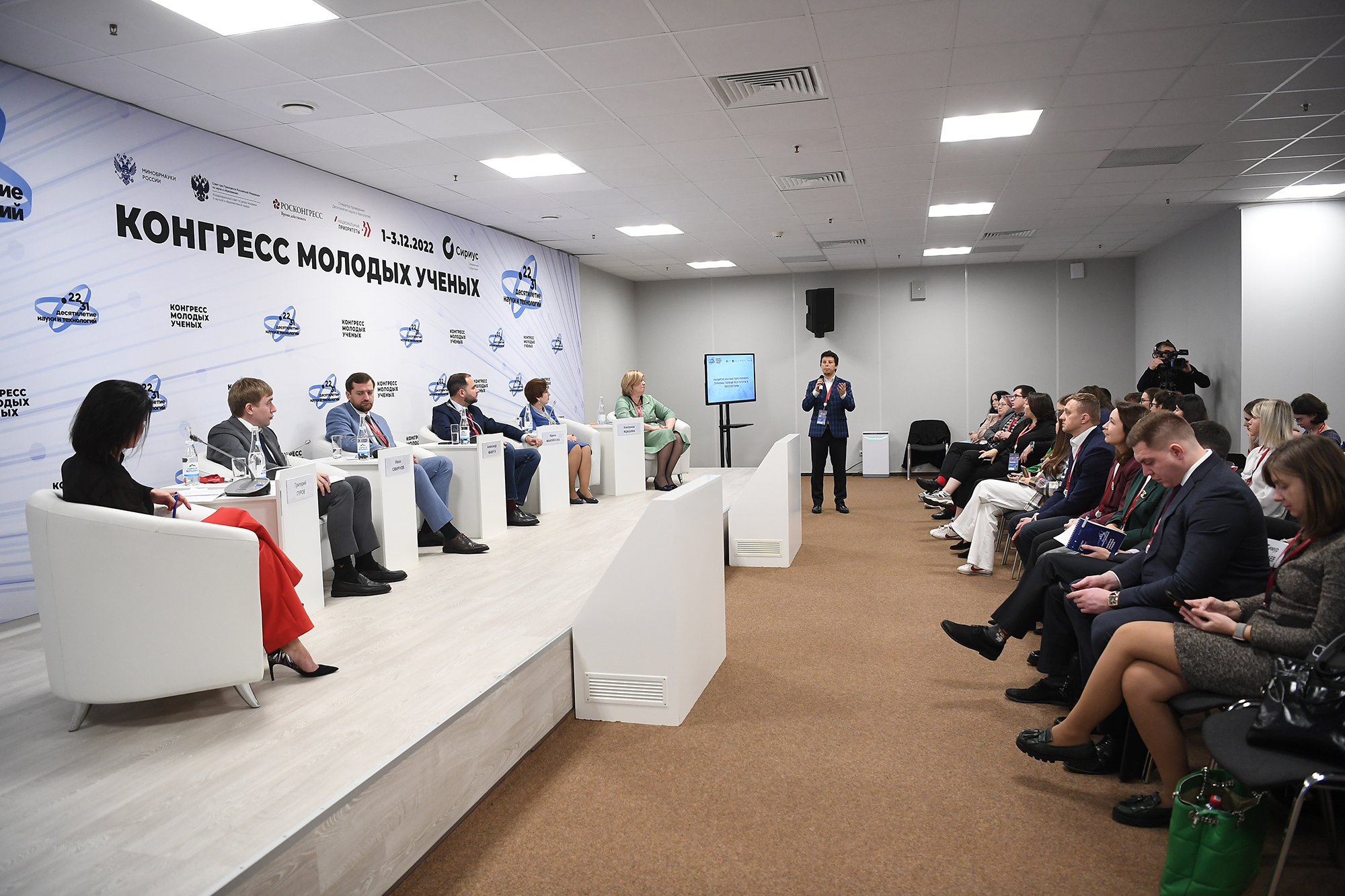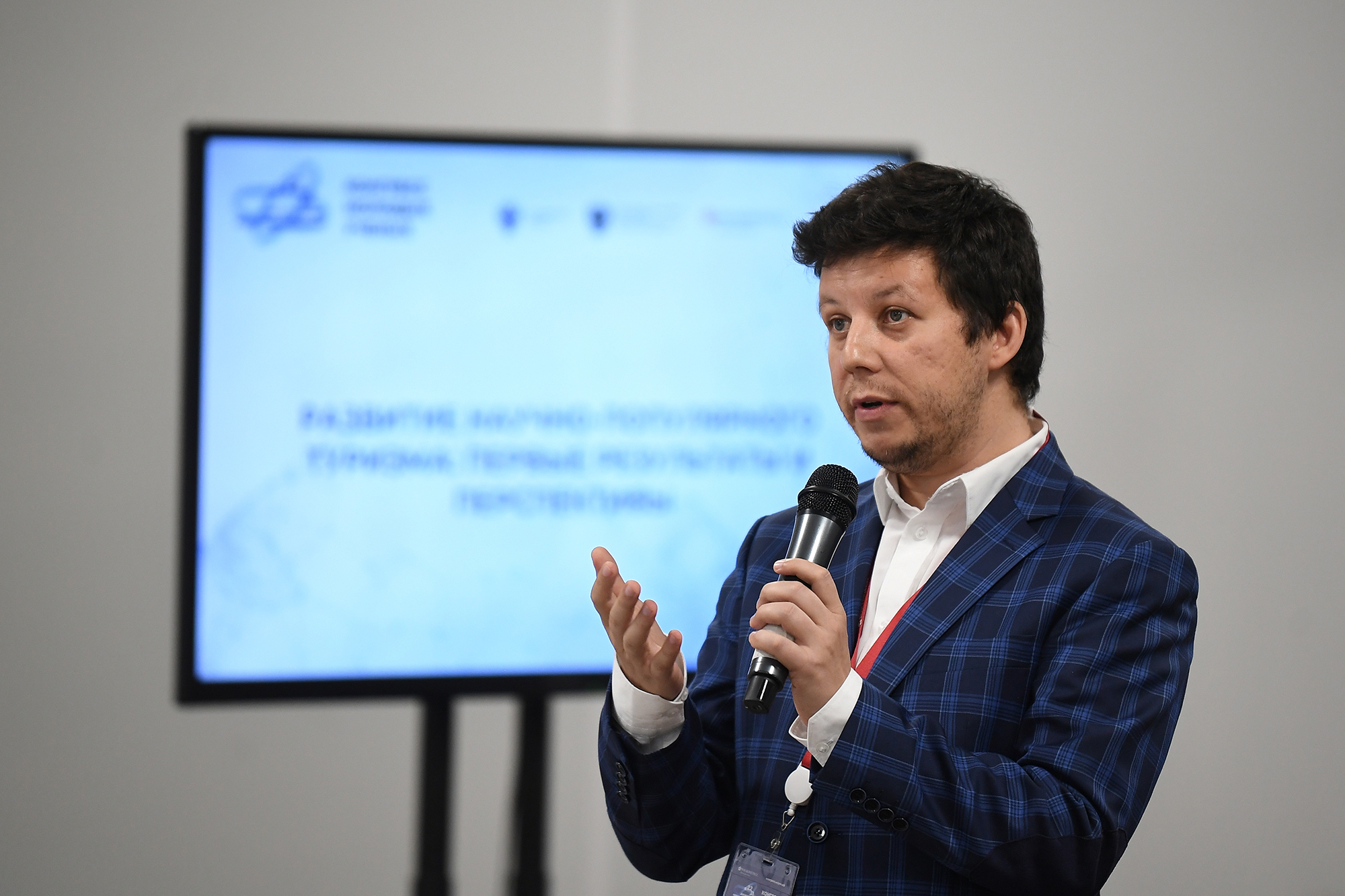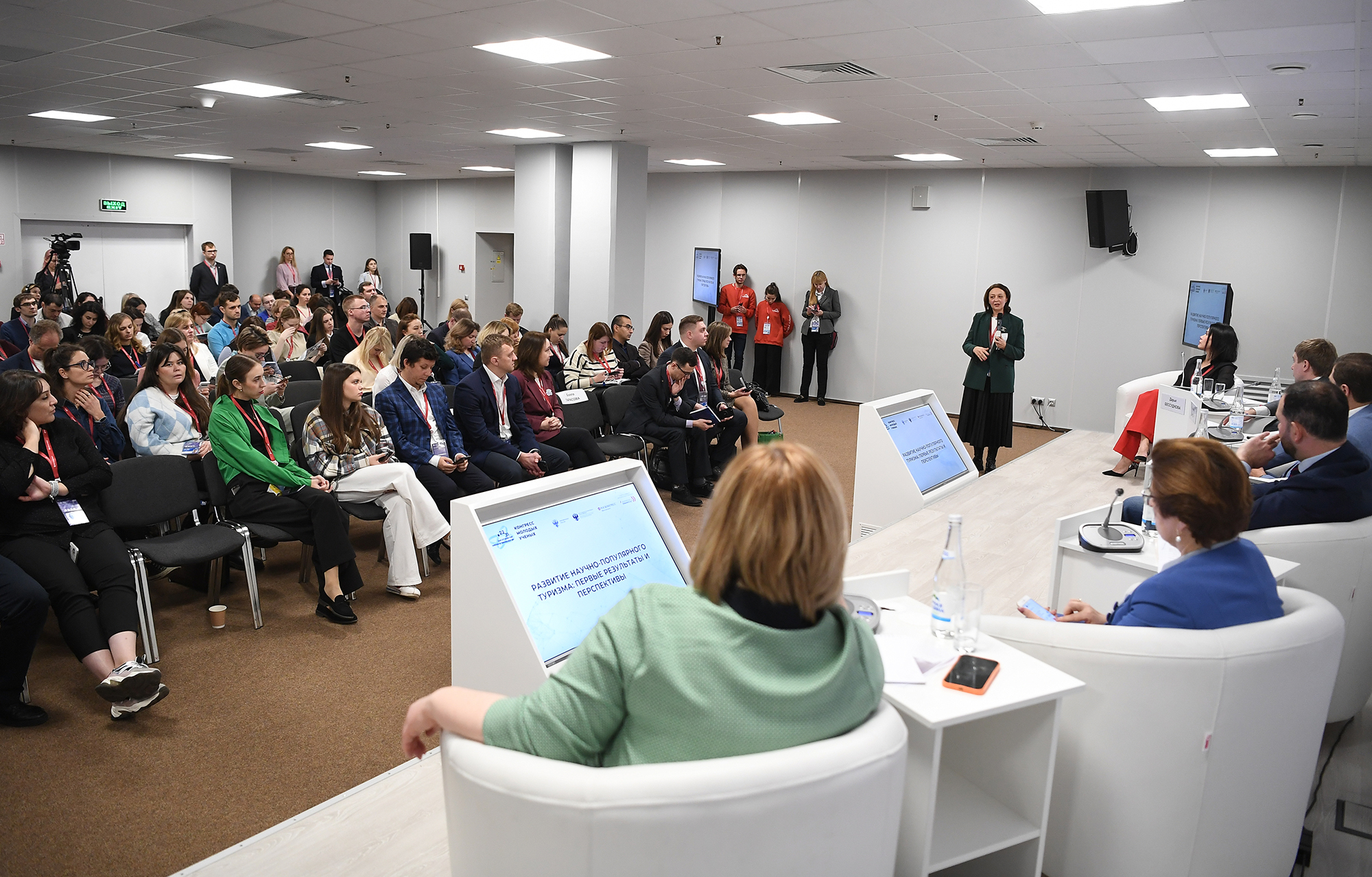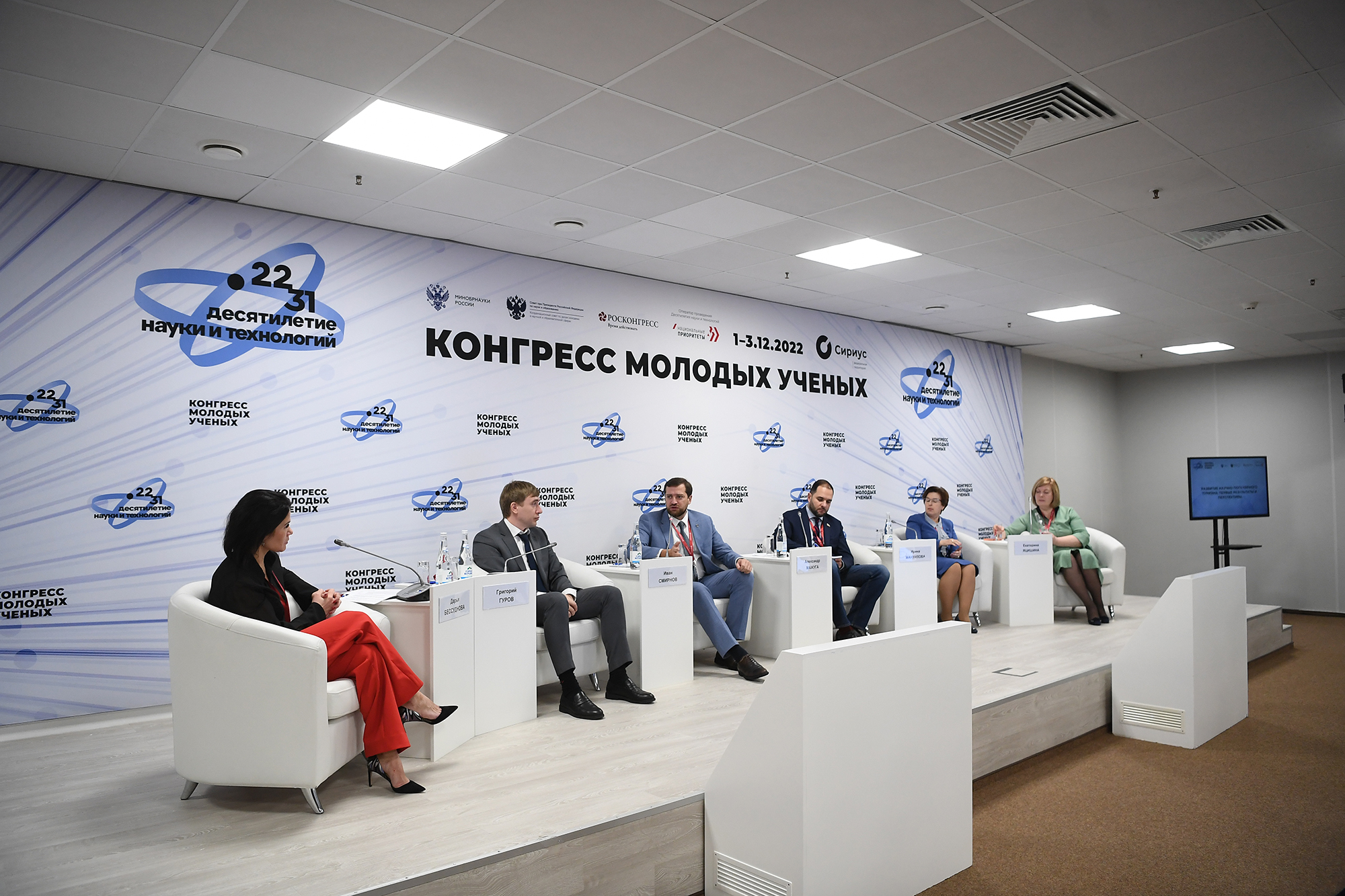JINR joins scientific tourism movement in Russia
News, 02 December 2022
On 2 December, as part of the 2nd Young Scientists Congress held in Sochi, a session “Development of Popular Science Tourism: First Results and Prospects” took place. The Joint Institute is among the scientific centres where you can get acquainted with activities of Russian researchers and scientific infrastructure. Participants of the event discussed the issues of providing access to science objects for the general public, as well as the content of excursion programmes and education of tour guides. The launch of the Mendeleev Tour project in the field of scientific tourism was considered. Acting Director of the JINR University Centre Alexander Verkheev took part in the discussion.
The speaker of the session, First Deputy Chairman of the State Duma Committee on Science and Higher Education Alexander Mazhuga called Dubna the main city of a new three-day trip to the science cities of the Moscow region “Mendeleev Tour”. The tour routes are designed in such a way that they will be interesting for both children and adults. They pass through eight science cities of Moscow, Moscow and Kaluga region: Chernogolovka, Dubna, Korolev, Obninsk, Protvino, Zelenograd, Zhukovsky, Zvenigorod. “It is great that the route to Dubna has already been implemented. It opens JINR for tourists. In addition, Dubna is a very comfortable, attractive, sincere, and romantic city, where you want to come back regularly,” the speaker noted. At the meeting, a proposal was considered as well to select route options, including on specific topics: chemistry, nuclear energy, aircraft construction, and others. In each option of the route, a visit to a scientific organization and laboratories, thematic lectures and workshops, admission to locations where entry is restricted are offered.
Alexander Verkheev said that the UC JINR’s objective was to work with students. However, vocational guidance of schoolchildren has become of great importance recently, including for the Joint Institute. Working with children at scientific sites closed to public access is difficult for organizations like JINR.
 Photos by RIA Novosti
Photos by RIA Novosti
“It is impossible visit operating facilities, such as the Superheavy Element Factory or the NICA Accelerator Complex, at any moment. Therefore, for the purposes of career guidance and science popularisation, JINR expositions have been created outside of technical sites.” For example, the Museum of History of Science and Technology of JINR provides excursions about the history of the international scientific centre in Dubna. An interactive exhibition “JINR Basic Facilities” opened at the JINR Cultural Centre “Mir”. It covers the main modern scientific directions and research at the Institute.
Popular science tourism is an initiative of the Decade of Science and Technology announced in Russia to increase the availability of information about achievements of Russian science. As part of the initiative, a popular science tourism programme for young people was developed, which started on 15 November 2022. Unique package tours for schoolchildren, students, and adults have already been opened in ten regions of the country. Scientific tourists can visit 50 research and educational centres; the Joint Institute for Nuclear Research is among the pilot projects. The 12-hour trip from Moscow to Dubna is designed for 7-11 grade schoolchildren and includes a visit to the interactive exhibition “JINR Basic Facilities” at the JINR Cultural Centre “Mir”, a tour of the Museum of the History of Science and Technology of JINR, as well as workshops, experiments, quizzes in the physics, chemistry, and geology laboratories of the University “Dubna”.
“At the initial stage, we offered schoolchildren to come to Dubna and visit exhibitions,” Alexander Verheev said. “Now we are focusing on school classes with the parent audience involvement.” Besides, he added that online tours of the Institute’s laboratories were available for everyone on the edu.jinr.ru platform.
The moderator of the session “Development of Popular Science Tourism: First Results and Prospects” was Daria Bessudnova, the curator of the initiative “Popular Science Tourism”.
Her interlocutors were Deputy Minister of Science and Higher Education of the Russian Federation Grigory Gurov, Deputy Governor of the Novosibirsk Region Irina Manuilova, a member of the Coordination Council for Youth Affairs in Science and Education under the Presidential Council for Science and Education Ivan Smirnov, Deputy Director for Scientific Work of the NRC “Kurchatov Institute” Ekaterina Yatsishina, a researcher of the State Autonomous Institution “Scientific Arctic Research Centre” (YaNAO, Russia) Rostislav Loktev, as well as representatives of tour operators.
Also on 2 December, as part of the events of the Young Scientists Congress, a DLNP senior researcher Mark Shirchenko delivered a popular science lecture at Rosatom State Corporation.


